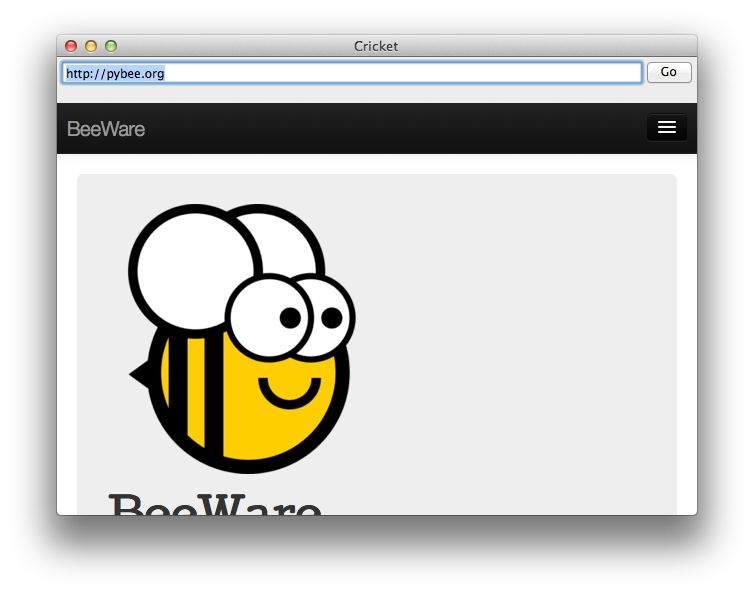Let’s build a browser!#
Note
Toga is a work in progress, and may not be consistent across all platforms.
Please check the Tutorial Issues label on Github to see what’s currently broken.
Although it’s possible to build complex GUI layouts, you can get a lot of functionality with very little code, utilizing the rich components that are native on modern platforms.
So - let’s build a tool that lets our pet yak graze the web - a primitive web browser, in less than 40 lines of code!

Here’s the source code:
import toga
from toga.style.pack import CENTER, COLUMN, ROW, Pack
class Graze(toga.App):
def startup(self):
self.main_window = toga.MainWindow(title=self.name)
self.webview = toga.WebView(
on_webview_load=self.on_webview_loaded, style=Pack(flex=1)
)
self.url_input = toga.TextInput(
value="https://beeware.org/", style=Pack(flex=1)
)
box = toga.Box(
children=[
toga.Box(
children=[
self.url_input,
toga.Button(
"Go",
on_press=self.load_page,
style=Pack(width=50, padding_left=5),
),
],
style=Pack(
direction=ROW,
alignment=CENTER,
padding=5,
),
),
self.webview,
],
style=Pack(direction=COLUMN),
)
self.main_window.content = box
self.webview.url = self.url_input.value
# Show the main window
self.main_window.show()
def load_page(self, widget):
self.webview.url = self.url_input.value
def on_webview_loaded(self, widget):
self.url_input.value = self.webview.url
def main():
return Graze("Graze", "org.beeware.graze")
if __name__ == "__main__":
main().main_loop()
In this example, you can see an application being developed as a class, rather than as a build method. You can also see boxes defined in a declarative manner - if you don’t need to retain a reference to a particular widget, you can define a widget inline, and pass it as an argument to a box, and it will become a child of that box.